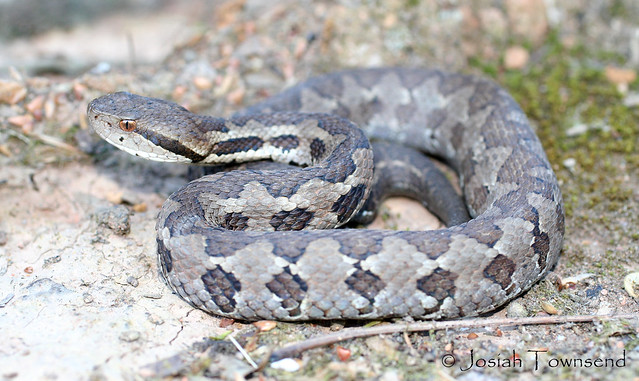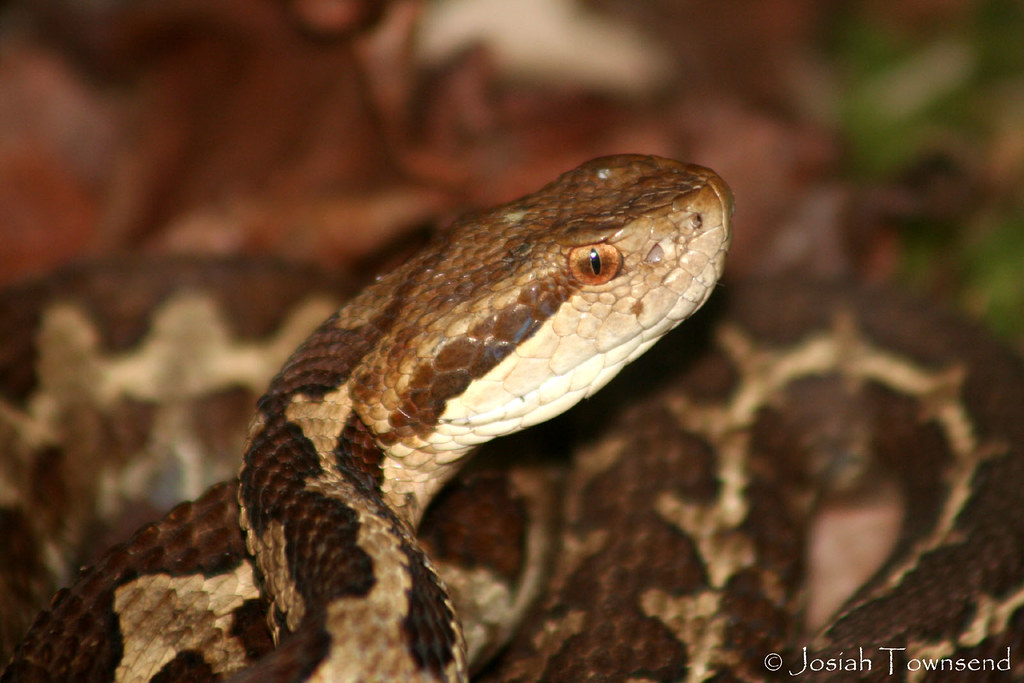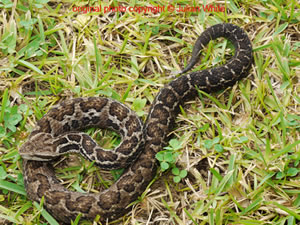Cerrophidion
Godmans mountain pit viper ( Cerrophidion godmani )
The mountain pit viper ( Cerrophidion ) are a snake genus of the subfamily of pit vipers. The genus comes with five species found in mountain ranges of Central America. Four of the five species have very small distribution areas in Mexico and Costa Rica and are poorly understood. All species are poisonous; the toxic effect in humans is low to strong, but deaths have not yet been documented.
The name Cerrophidion derives from the Spanish " cerro " for hill, mountain and the Greek " ophidion " small snake.
- 6.1 Notes and references
- 6.2 Literature
Features
Physique
Mountain pit vipers are small to medium large, final snakes. The head is distinct from neck, the snout is rounded and the eyes are large. The tail is not prehensile. Three of the four species reach a maximum total length of 51 cm, one species ( C. godmani ) reaches a maximum of 82 cm, but usually remains below 55 cm in length.
Squamation
The rostral is wider than high. The top of the head shows a very variable scalation, the shed in the front area are usually increased significantly. The number of supralabials is 7 to 11, the number of Infralabialia 8 to 12 The number of ventral scales ( Ventralschilde ) varies between 120 and 150, the number of undivided Subcaudalia 22-36 and the number of dorsal scale rows in the middle of the body between 17 and 23
Coloring
The basic color of the top is brown, gray-brown or red-brown, rarely almost orange. Show on the back of the animals on this ground two rows of large, more or less angular, dark spots, which are often associated with each other and thus form a zigzag ribbon. Are including one or more rows of smaller spots on the flanks. All species have a narrower or wider dark Postokularstreifen, which extends from the posterior edge past the muzzle angle.
Distribution and habitat
Mountain pit vipers are restricted to Central America. Three of the five species have very small distribution areas in southeastern Mexico, the distribution area of C. godmani ranges from Southeast Mexico to western Panama. C. Sasai is found in Costa Rica. All species inhabit montane regions populated habitats ranging from pine-oak forests on mountain cloud forests to alpine meadows.
System
Campbell & Lamar recognize four species are recognized for each no subspecies. 2012, Jadin et al. the occurrence of Cerrophidion godmani examined for Costa Rica closer and Cerrophidion Sasai separated as a new species.
- Cerrophidion godmani ( Günther, 1863)
- Cerrophidion Sasai Jadin, Townsend, Castoe & Campbell, 2012
- Cerrophidion petlacalensis López- Luna, Vogt & Torre- Loranca, 1999
- Cerrophidion tzotzilorum ( Campbell, 1985)
The genus was described in 1992 based on morphological characteristics, the species of the genus were asked to go to the hook nose Terciopelos ( genus Porthidium ). In previous molecular genetic studies than three of the four species were included (without C. barbouri ). The results suggest the monophyly of the genus Cerrophidion and a close relationship of this species to the genus Porthidium.
Lifestyle, diet, and reproduction
The species of the genus are ground alive and, if known, almost exclusively diurnal. Unlike many other pit vipers, the animals are apparently actively for their prey -seeking hunters and not primarily ambush hunters. The food spectrum of C. godmani has been well studied, it consists of small vertebrates, especially mammals, reptiles and amphibians as well as arthropods. Here, eat hatchlings to almost 80 % arthropods, but with increasing size of the snakes whose share is dwindling. For animals over 520 mm total length, this will only make about 25 % of the prey and the proportion of small mammals increases to about 50%. The few data on the other three species also show a predominantly consists of small mammals, reptiles and amphibians diet.
All species are viviparous, further data on reproduction are just two species (C. barbouri and C. godmani ) ago. Young are born in the rainy season, for the two species are 2-12 pups per litter proved.
Poison
All species are poisonous, but the animals are not aggressive and bites are very rarely documented. The venom has a high proportion of tissue- destructive components. The toxic effect on humans is generally mild and limited to short -lasting pain and slight swelling, in some cases, however, severe pain, severe swelling around the bitten limb, nausea and headache were noted, which persisted up to 15 days. Deaths, however, are not previously documented.










